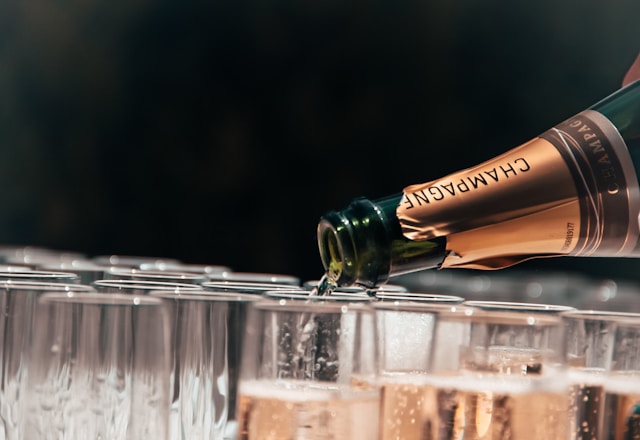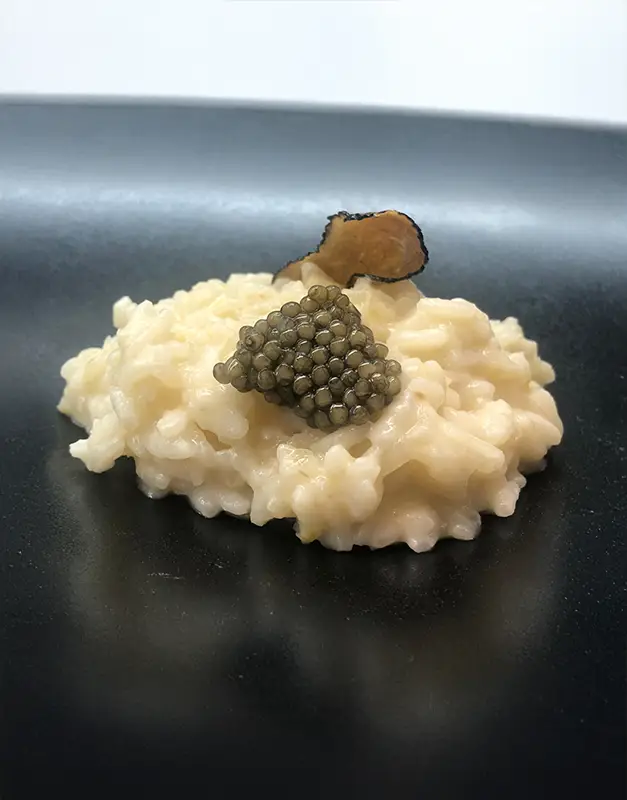Enjoy Caviar, food and beverages to accompany it, Madrid December 1, 2024.
Caviar is an exceptional product and sometimes we may have some doubts about how to harmonize or pair it with other products or beverages. From Ambrose & Paubet we want your experience enjoying our caviar to be perfect, so here we leave you some ideas that will surely be to your liking.
Neutral foods to enjoy Caviar
Those with a mild flavor, or directly without added flavor beyond the simple base (foods with wheat flour – not fresh pasta, light toast, blinis -, eggs cooked at low temperature, fresh sheep’s milk cheese, cream of potato or boiled potato, jellies, very fresh fish in sushi format without too much curing or fermentation, milk meats, crème fraîche…).
The objective is to provide texture that accompanies the caviar, and not flavor that masks it.
Enhancer foods
They are those which, due to their glutamic acid, serine and aspartic acid content, accompanied by an adequate and smooth balance of flavors that do not invade the caviar flavor but balance it, turn the mixture of both flavors into a new entity.
It is typical that if a balanced flavor appears, they enhance each other, and do not cancel each other out. They are typical in certain animal products not intensively cooked (wagyu and Galician meats, brains, kidneys, sweetbreads, free-range eggs at low temperature, fat of Iberian pigs 75%, red tuna, soft fish marinades, smoked fresh fish, fresh sea bass, very fresh hake, grilled soft fish, and tartares related to all of them), some types of crustaceans, oysters, red shrimp, blue crab, etc.), vegetables (chives, white asparagus, kale, zucchini, soft vegetable creams, creams of vegetables, soft vegetable creams, creams of vegetables, white asparagus, kale, zucchini, kale, zucchini, red shrimps, red shrimp, blue crab, etc.). vegetables (chives, white asparagus, kale, zucchini, soft vegetable creams, topinambur, etc.) and mushrooms. To give some examples.
Drinks that will make you enjoy Caviar
White wines or champagnes brut nature, brut or dry, vodka (of classic fermentation and distillation, natural and with own alcohol of the process and not added), and certain sakes (especially recommended honjozos, and certain daijingos, in short coming from grains of rice little polished). In the case of wines and sakes, especially, a flat acidity compared to caviar, low to moderate astringency, brut to dry sugar content, and a tannin content consistently balanced with the vitellin, and careful attention to their reaction and the reaction of malic and tartaric acids with the amino acids of the vitellin (attached table with typical concentrations of amino acids) must be taken into account.

White wines and sakes with less polishing are much more recommendable than tannic red wines or those with too much acidity, and taking special care with varieties grown in soils with little limestone or in extreme climates; and sakes without polishing, or polished until all the starch has been discarded, in the first case because of the sugar content, and in the second, because of the added alcohol content together with excessive bitterness. Remember that if there are no sugars to ferment, alcoholic beverages are usually supplemented with industrial alcohols, which is something to be avoided in haste.
Foods that are not recommended or risky
Any food with added sugars or alcohols, or acidity too low of neutral, salinity or intense bitterness (in weight scales of more than 5% of the weight of the food, pose a high risk). In the first two cases, apart from destroying the collagen tissue and the vitellum in the case of acidity, and by chemical bonds in the vitellum, they lead to the acceleration of the acidification of the vitellum in the medium term.
In all cases, they definitely spoil the flavor, and indirectly damage the egg because they unbalance the internal chemical balance, resulting also in the destruction of the vitamin supply or destroying part of the protein content of the caviar.

